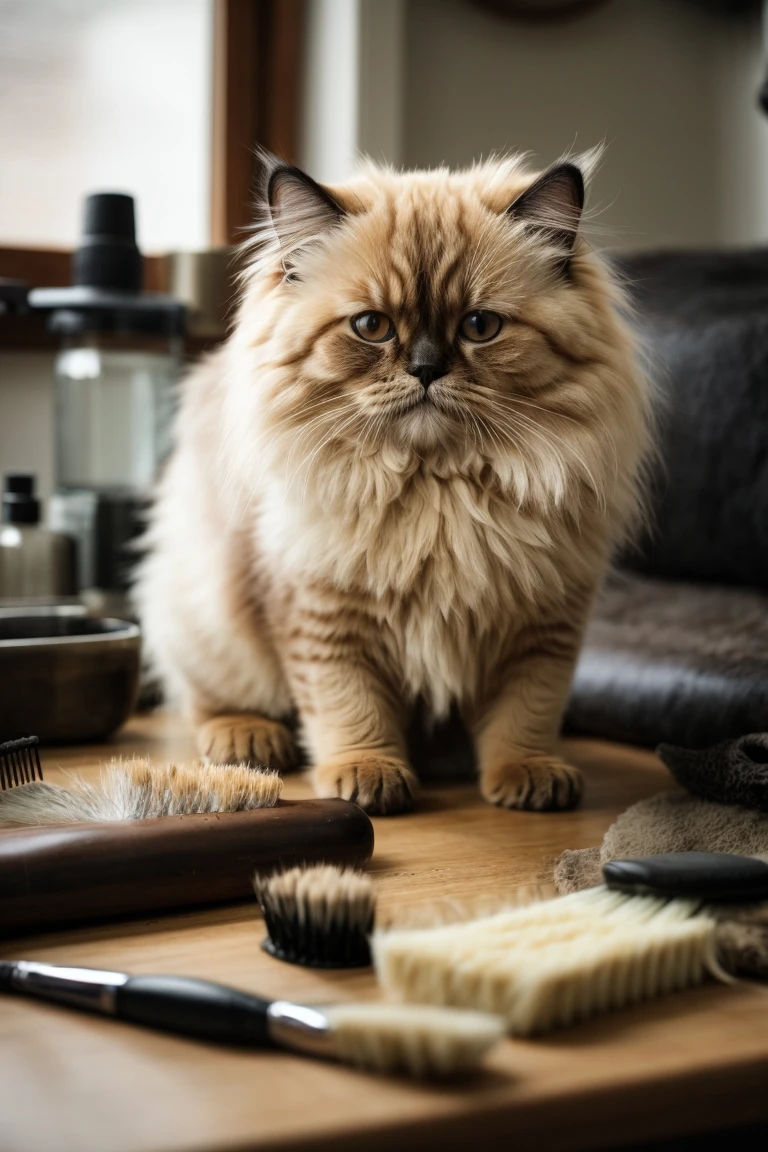Himalayan Cat Grooming and Coat Care: A Step-by-Step Guide

With their luxurious long fur, beautiful markings, and big, expressive eyes, Himalayan cats are undoubtedly a sight to behold. But along with their breathtaking beauty comes the responsibility of grooming. This detailed guide will walk you through every aspect of grooming your Himalayan cat, ensuring that they look and feel their best.
Understanding the Himalayan Coat
Understanding the Himalayan Coat
First and foremost, it's important to appreciate the uniqueness of the Himalayan's coat.
"Himalayans boast a thick, plush double coat, akin to their Persian ancestors, and share the pointed markings of Siamese breeds."
This coat, while magnificent, requires regular maintenance to prevent matting, reduce shedding, and ensure overall skin health.
Why Grooming is Essential
- Prevents Matting: Their long fur can easily become tangled.
- Health Checks: Regular grooming allows you to check for signs of skin problems, lumps, or infections.
- Reduces Shedding: Regular brushing can manage and reduce the amount of hair they shed.
- Bonding: Grooming can be a bonding activity between you and your cat if done gently and patiently.
Tools You'll Need
Before we delve into the grooming steps, ensure you have the right tools on hand.
| Tool Type | Purpose |
|---|---|
| Wide-tooth comb | Detangling and initial combing |
| Slicker brush | Removing loose hair and smoothing the coat |
| Cat nail clippers | Keeping their claws at a safe length |
| Cat wipes or shampoo | For occasional cleaning |
| Ear cleaner | Maintaining ear hygiene |
| Cotton balls | Cleaning various areas safely |
Step-by-Step Grooming Guide
1. Preparation
- Ensure you’re in a calm environment.
- Lay down a towel or mat to manage the shed fur.
- Have treats on hand to reward your cat, making the process pleasant for them.
2. Detangling with a Wide-Tooth Comb
- Start at the head and move down to the tail.
- Always comb in the direction of the fur growth.
- Gently tackle any knots – never pull harshly.
3. Brushing with a Slicker Brush
- After detangling, use the slicker brush to remove loose hairs.
- This helps in reducing the amount of hair your cat might ingest while grooming themselves.
4. Cleaning the Face and Eyes
- Himalayans often have watery eyes which can stain their fur.
- Gently wipe any crust or discharge with a moistened cotton ball.
- Ensure you use a different cotton ball for each eye.
5. Ear Cleaning
- Check their ears for excessive wax or signs of an infection.
- Clean only the parts of the ear you can see.
- Use a vet-recommended ear cleaner and cotton ball. Avoid using Q-tips.
6. Bathing (Occasionally)
- Unlike other cats, Himalayans may need occasional baths, especially if they become soiled.
- Use a cat-specific shampoo and ensure you rinse thoroughly.
- Dry them with a soft towel and keep them warm until they're completely dry.
7. Nail Clipping
- Check their claws every two weeks.
- Trim only the transparent tip, avoiding the quick (the pinkish area inside the nail).
8. Final Check
- Once grooming is complete, give your cat a thorough once-over.
- Check for any areas you might have missed or any signs of skin issues.
Common Problems and Troubleshooting
Problem: Resistant to Grooming
- Solution: Start with short grooming sessions, gradually increasing the duration. Use treats and positive reinforcement. If your cat becomes aggressive, consider seeking the help of a professional groomer.
Problem: Severe Matting
- Solution: If the fur becomes severely matted, it may be painful for your cat. It's best to consult a vet or professional groomer to safely remove the matted fur.
Problem: Eye Discharge or Ear Infections
- Solution: If you notice excessive discharge, redness, or a bad smell, it's essential to consult your vet as these could be signs of infections.
Problem: Excessive Shedding
- Solution: While shedding is normal, excessive shedding might indicate health issues or dietary deficiencies. Ensure you're feeding them high-quality cat food and consult your vet.
Conclusion
Grooming your Himalayan cat is not just about maintaining their beautiful coat; it's also about ensuring their overall health and strengthening the bond you share. With patience, the right tools, and regular care, your Himalayan will not only look like royalty but also feel like it.